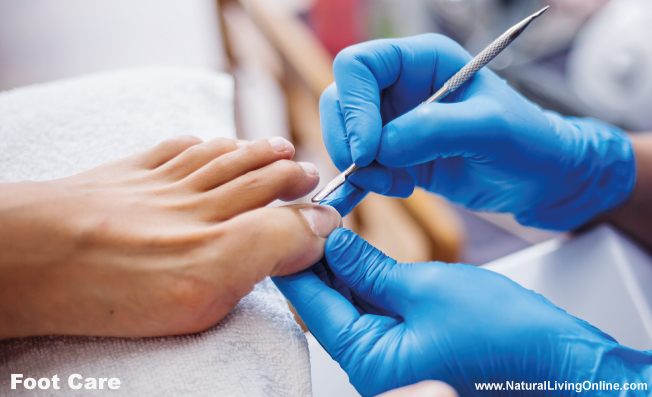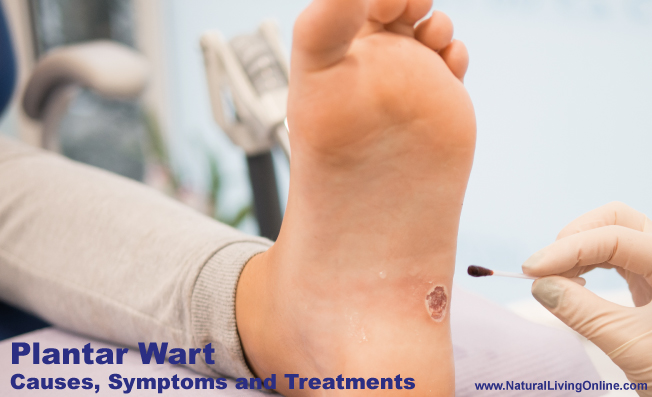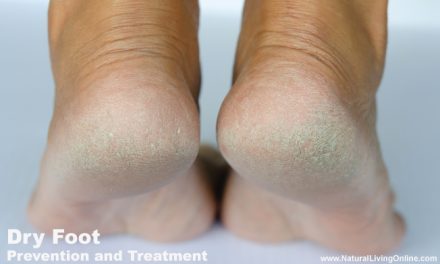Warts are small, rough growths on the top layer of skin caused by a viral infection in the top layer of the skin. There are different types of warts, including:
Common warts: They usually grow on the hands, fingers, or around the nails.
Plantar warts: They grow on the bottom of the feet and can be painful.
Flat warts: They grow on the face, legs, and arms.
Genital warts: They are a sexually transmitted infection that grows on the genitals or anus.
Filiform warts: They grow around the mouth, nose, or beard area.
What are plantar warts?
Plantar warts are small growths on the soles of the feet caused by the human papillomavirus (HPV). They can grow singly or in clusters and may appear as tiny black dots on the sole of the foot or surface. Plantar warts can cause foot pain, especially when standing or walking. They can be mistaken for calluses or corns, but unlike calluses, they may have small black dots in the center.
It is important to identify and treat plantar warts because they can be painful and affect daily activities such as walking and standing. If left untreated, they can grow larger and spread to other areas of the foot. They can also be transmitted to other people. Proper treatment can help alleviate the pain, reduce the size of the wart, and prevent the spread of the virus to others. It is also important to differentiate between plantar warts and other foot conditions, such as calluses or corns, to ensure proper treatment. If left untreated, some plantar warts can become resistant to treatment and may require surgical intervention to remove. Therefore, early identification and treatment are crucial to avoid more complex and costly interventions.
Causes
Plantar warts are caused by the human papillomavirus (HPV). The virus enters the skin through small cuts or cracks on the feet, and then infects the skin cells. HPV is a common virus that can infect people of all ages, but it is more common in children and adolescents. There are over 100 different strains of HPV, but only a few strains cause plantar warts.
What causes plantar warts?
The virus that causes plantar warts is highly contagious and can be found and thrives in warm, moist environments such as swimming pools, locker rooms, and public showers. It can also be spread by sharing shoes, socks, or towels with someone who has the virus. People with weakened immune systems are more susceptible to developing plantar warts because their bodies are less able to fight off the virus.
Risk factors for developing plantar warts
Some people are more likely to develop plantar warts than others. The following are some of the risk factors for developing plantar warts:
- Age: Plantar warts are more common in children and adolescents than in adults.
- Weakened immune system: People with weakened immune systems, such as those with HIV or undergoing chemotherapy, are more susceptible to developing plantar warts.
- Walking barefoot: Walking barefoot in public areas, such as locker rooms or public showers, increases the risk of contracting the virus that causes plantar warts.
- Damaged skin: Cuts, scrapes, or other damage to the skin on the feet can provide an entry point for the virus.
- Excessive sweating: People who have excessively sweaty feet are more likely to develop plantar warts.
How the virus spreads
The virus that causes plantar warts is highly contagious and can be spread through direct contact with the virus. The virus can enter the skin through small cuts or abrasions on the feet, allowing the virus to infect the skin cells. The virus can also be spread indirectly through contaminated surfaces such as locker room floors, pool decks, and public showers. Sharing shoes, socks, or towels with someone who has the virus can also spread the virus. It is important to take precautions when in public areas to avoid contracting the virus, such as wearing shoes or sandals in locker rooms and public showers.
Symptoms
Plantar warts can be painful and affect daily activities such as walking and standing. The following are some of the symptoms of plantar warts:
How plantar warts look and feel?
Plantar warts can appear as small, rough, raised growths on the soles of the feet. They may be gray or brown in color, and may have small black dots in the center. These black dots are actually small blood vessels that have grown into the wart. Plantar warts can also appear in clusters, which are called mosaic warts. These clusters can be painful and may make it difficult to walk or stand. Plantar warts can be mistaken for calluses or corns, but unlike calluses, they may have small black dots in the center.
How to identify plantar warts?
To identify plantar warts, look for the following characteristics:
- Small, rough growths on the soles of the feet.
- Gray or brown in color, and may have small black dots in the center.
- Raised above the surface of the skin.
- Painful when standing or walking.
- Clusters of warts, which are called mosaic warts.
If you are unsure whether you have plantar warts, it is important to consult a healthcare professional for proper diagnosis.
Other symptoms
In addition to the characteristic appearance of plantar warts, they can also cause other symptoms such as:
- Pain or tenderness when standing or walking.
- Itching or irritation.
- Bleeding when the wart is scraped or picked.
- The development of additional warts in other areas of the foot.
If you experience any of these symptoms, it is important to seek medical attention to determine the cause and appropriate treatment.
Diagnosis
How doctors diagnose plantar warts?
Plantar warts can usually be diagnosed through a physical examination by a healthcare professional. During the examination, the healthcare professional will look for characteristic signs of plantar wart, such as small, rough thickened skin growths on the soles of the feet with a rough surface and small black dots in the center. They may also ask about symptoms such as pain or tenderness when standing or walking.
Tests that may be done
In most cases, no additional tests are needed to diagnose a plantar wart. However, if the healthcare professional is unsure about the diagnosis or if the wart is particularly large or unusual in appearance, they may perform a biopsy. A biopsy involves removing a small piece of the wart and examining it under a microscope to confirm the diagnosis.
In some cases, the healthcare professional may also recommend an X-ray or MRI to rule out other conditions, such as a bone spur or stress fracture, which can cause similar symptoms. These tests are usually only necessary if the healthcare professional suspects another underlying condition.
It is important to consult a healthcare provider if you suspect that you have a plantar wart or any other foot condition. Early diagnosis and treatment can help prevent the spread of the virus and reduce the risk of complications.
Treatment
Plantar wart treatments can be challenging, but there are several options available. Treatment depends on the severity of the wart and the patient’s preference. The following are some of the treatments available:
Home remedies
Soaking the wart:
Soaking the wart in warm water for 10-15 minutes each day can help soften the thickened skin and make it easier to remove dead skin cells. This can also help the wart respond better to other treatments. Foot soak also promotes healthy skin prevents developing plantar warts.
Using over-the-counter treatment
Over-the-counter treatments such as salicylic acid and cantharidin are commonly used to treat most plantar warts. These treatments work by gradually dissolving the wart over time. They should be used as directed and may take several weeks to see results.
Other natural remedies
Some people may try natural remedies such as applying duct tape or using essential oils like tea tree oil or thuja oil. However, there is limited scientific evidence to support these treatments.
Medical treatments

Cryotherapy
Cryotherapy involves freezing the wart with liquid nitrogen. This destroys the wart tissue and stimulates the immune system to fight the virus. This treatment may be painful and may require several sessions to completely remove the wart.
Laser therapy
Laser treatment uses a beam of light to destroy the wart tissue. This treatment is usually reserved for more stubborn warts that have not responded to other treatments.
Surgery
In some cases, surgery may be necessary for plantar wart removal. This may be done under local anesthesia and involves cutting out the wart tissue.
Prescription medications
In some cases, healthcare professionals may prescribe stronger medications such as bleomycin or imiquimod to treat plantar warts. These medications work by stimulating the immune system to fight the virus.
It is important to note that treatment of plantar warts may take several weeks or months, and it is important to follow the healthcare professional’s instructions for proper care and follow-up. It is also important to maintain good foot hygiene to prevent the spread of the virus to other areas of the foot or to other people.
Prevention
- Keep feet clean and dry: Regularly washing and drying feet can help prevent the spread of plantar warts. Moisture can encourage the growth of the virus that causes warts.
- Avoid sharing personal items: Avoid sharing items like shoes, socks, towels, and nail clippers with others. The virus that causes plantar warts can be easily spread through these items.
- Wear shoes in public areas: Wear shoes or sandals in public areas such as locker rooms, showers, and swimming pools to reduce the risk of exposure to the virus.
- Cover warts: Cover any existing warts with a bandage or duct tape to prevent the virus from spreading to other parts of the body or to others.
- Body’s immune system: Having a weak immune system can make individuals more susceptible to wart causing hpv virus. When the immune system is compromised, the body is less able to fight off infections, including the virus that causes warts. To help prevent plantar warts in individuals with weakened immune systems, it is important to take extra precautions to avoid exposure to the virus. This includes practicing good foot hygiene, avoiding sharing personal items, wearing shoes in public areas, and keeping the feet clean and dry.
Tips for avoiding getting plantar warts
- Wear shoes that fit properly: Shoes that are too tight can cause pressure on the feet, creating an environment that is more conducive to the growth of the virus. Shoes that are too loose can also cause friction, which can lead to the development of warts.
- Avoid going barefoot in public areas: Walking barefoot in public areas such as locker rooms, showers, and swimming pools can increase the risk of exposure to the virus that causes plantar warts.
- Keep feet healthy: Maintaining good foot hygiene and taking care of any cuts or abrasions on the feet can help prevent the virus from entering the skin.
- Boost the immune system: A strong immune system can help fight off the virus that causes warts. Eating a healthy diet, getting enough sleep, and reducing stress can help boost the immune system.
By following these prevention tips, individuals can reduce their risk of developing plantar warts or spreading the virus to others.
In conclusion, plantar warts are a common viral infection that affects the feet. They are caused by the human papillomavirus (HPV) and can be easily spread through direct contact with an infected person or surface. Symptoms of plantar warts include rough, grainy growths on the soles of the feet, and they may be accompanied by pain or tenderness.
There are several treatment options available for plantar warts, including home remedies, medical treatments, and prescription medications. However, it is important to note that treatment of skin infection can take several weeks or months, and proper foot hygiene is essential to prevent the spread of the virus.
If you suspect you have plantar warts or have a growth on your foot that you are unsure about, it is important to seek medical attention. A healthcare professional can provide an accurate diagnosis and recommend appropriate treatment.
In summary, plantar warts can be a persistent and uncomfortable condition, but with proper prevention, early detection, and appropriate treatment, individuals can manage this condition effectively and improve their overall foot health.
References & further Reading
Plantar Warts Treatment – Cleveland Clinic
This website does not provide medical advice.
All information provided on this website, and on associated social media networks, including but not limited to texts, images, and numbers are for general information purpose only. It is not intended as medical advice and it does not include all possible precautions, side effects, or interactions that may occur. Neither NaturalLivingOnline.com nor its author/founder take responsibility for how you use this information. Statements contained on NaturalLivingOnline.com have not been evaluated by the FDA. You should conduct thorough research via multiple sources and consult your physician or qualified doctor before using any essential oil or herbal remedy. Information on NaturalLivingOnline.com must not be relied upon for medical, legal, financial or other decisions.













